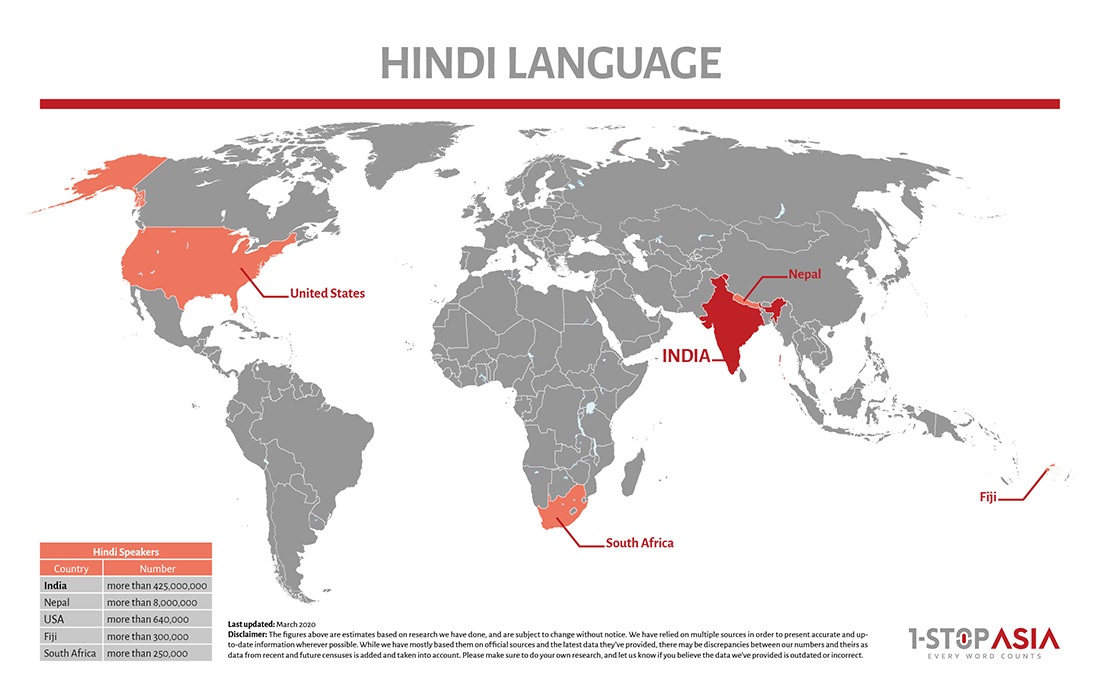Hindi Language
551M Hindi Speakers
Linguistically Hindi is the same language as Urdu but it is written in the Devanagari script, whereas Urdu is written in the Persian script.
If you feel it is time to improve your time-management and pay more attention to your clients
The complexity of Hindi translation
1. The written language > Translation Service
- Loan words: Hindi borrows heavily from Persian and Arabic. Over 5,000 words are loan words from these languages, which significantly enhances the vocabulary of the language making it a challenge when performing Hindi translation.
- The details: To a foreigner, the loanwords can look the same but a small dot can totally change the meaning of a word. The dot is called a Nuqtā (नुक़्ता), also spelled Nuktā and is a diacritic sign. In the Devanagari script, it represents a sound that has been introduced into the language later on.
2. The spoken language > Media Service
- Dialects: In Hindi, there are over 400 dialects and 4 varieties of the language (High Hindi, Literary Hindi, Nagari Hindi, and Standard Hindi). The target group is the most important as you need to know which dialect exactly you will need. The translator has to translate into this dialect as well as to consider the region where the audience belongs. And that is not all – the difference and sensitivity of the culture, politics, and society are a few more factors that should be taken into account.
- Regional influence: One of the biggest challenges in Hindi translation is the diversity of the language. The regional dialects are so many that it is hard to even count them all. When it comes to translating English into Hindi, the dialect of the translator is recognizable in the translation as well.
Get exclusive insights into the world of translation, localization, and the language industry.
Our solution for you
Native translators with local knowledge
At 1-StopAsia, we have managed to gather a carefully selected pool of Hindi translators, which are here for you to help in your translation needs. Our Project Managers will always be there to monitor your projects, minimize errors, and make the delivery on time. As with other languages, we have incorporated an additional Quality Assurance team, which monitors the whole process and improves our process all the time. This well-structured process aims at enhancing our performance and delivering a satisfactory final result.
25 years of experience
For over 2 decades working in the translation business, we’ve cultivated an in-depth understanding of the industry and most importantly we’ve built a flexible and efficient project management system. Our Project Managers are always there to handle your inquiries, save you time and deliver the translations within the allotted time for each assignment.

